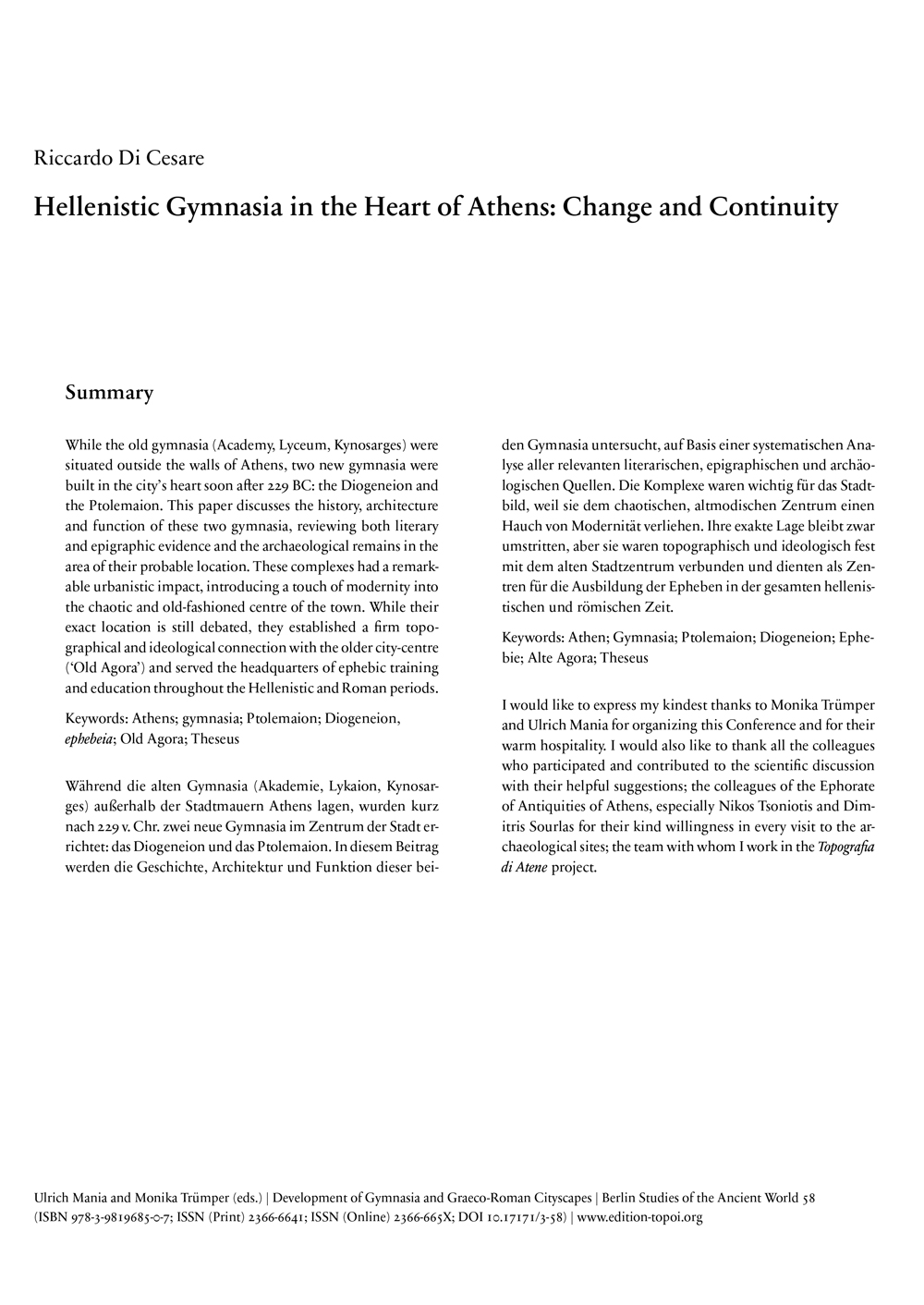Hellenistic Gymnasia in the Heart of Athens: Change and Continuity
While the old gymnasia (Academy, Lyceum, Kynosarges) were situated outside the walls of Athens, two new gymnasia were built in the city’s heart soon after 229 BC: the Diogeneion and the Ptolemaion. This paper discusses the history, architecture and function of these two gymnasia, reviewing both literary and epigraphic evidence and the archaeological remains in the area of their probable location. These complexes had a remarkable urbanistic impact, introducing a touch of modernity into the chaotic and old-fashioned centre of the town. While their exact location is still debated, they established a firm topographical and ideological connection with the older city-centre (‘Old Agora’) and served the headquarters of ephebic training and education throughout the Hellenistic and Roman periods.
Während die alten Gymnasia (Akademie, Lykaion, Kynosarges) außerhalb der Stadtmauern Athens lagen, wurden kurz nach 229 v. Chr. zwei neue Gymnasia im Zentrum der Stadt errichtet: das Diogeneion und das Ptolemaion. In diesem Beitrag werden die Geschichte, Architektur und Funktion dieser beiden Gymnasia untersucht, auf Basis einer systematischen Analyse aller relevanten literarischen, epigraphischen und archäologischen Quellen. Die Komplexe waren wichtig für das Stadtbild, weil sie dem chaotischen, altmodischen Zentrum einen Hauch von Modernität verliehen. Ihre exakte Lage bleibt zwar umstritten, aber sie waren topographisch und ideologisch fest mit dem alten Stadtzentrum verbunden und dienten als Zentren für die Ausbildung der Epheben in der gesamten hellenistischen und römischen Zeit.

